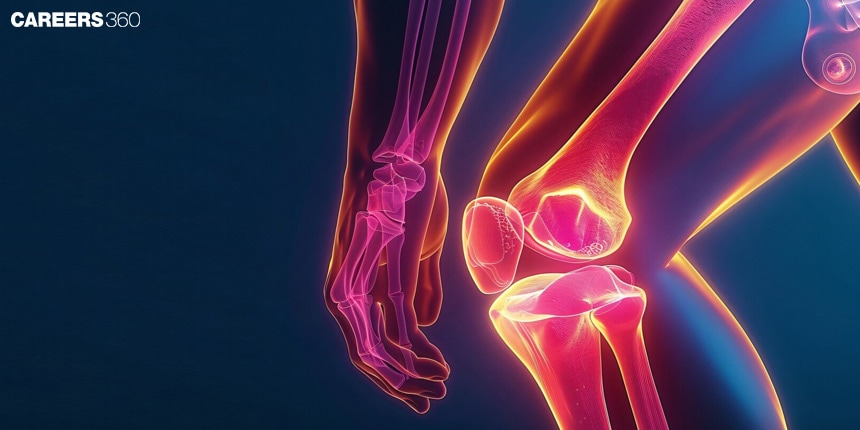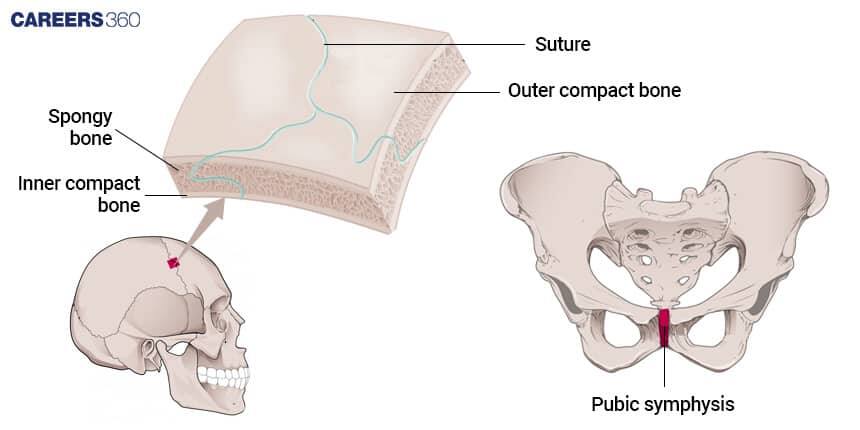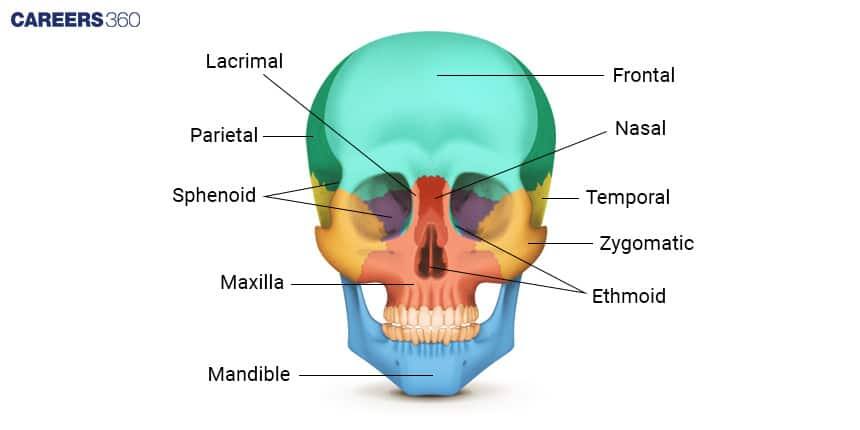Fibrous Joints: Definition, Meaning, Examples, Types, Diagram, Classification
Fibrous joints are also known as immovable or fixed joints. They are of the type where bones are connected by dense connective tissue, mainly collagen. In this type of joint, the skeletal system is offered stability and support, with such joints usually found in areas where movement is less desirable or minimal. Examples of common fibrous joints include suture joints within the skull, gomphosis joints where the roots of the teeth are fixed into the jawbone, and syndesmosis joints, such as where the tibia and fibula are connected or between the radius and ulna. This is a topic from the Locomotion and Movement chapter of Biology.
NEET 2025: Mock Test Series | Syllabus | High Scoring Topics | PYQs
NEET Important PYQ's Subject wise: Physics | Chemistry | Biology
New: Meet Careers360 B.Tech/NEET Experts in your City | Book your Seat now
- What are Fibrous Joints?
- Type of Fibrous Joints
- Clinical Significance

What are Fibrous Joints?
Fibrous joints, also known as immovable joints, are directly connected by dense fibrous connective tissue, mostly made of collagen fibres. Synovial joints allow for great movement, but fibrous joints are designed to offer stability and very little or no movement. These do not have a cavity and are important in maintaining the structural integrity of the body.
Examples of Fibrous Joints
Suture Joints: These are found in the skull, where bones interlock closely and form an immovable connection. This is another example of an immovable joint.
Gomphosis Joint: That joint between the teeth and their sockets in the jawbone secured by the periodontal ligament.
Also Read:
Type of Fibrous Joints
The different types of Fibrous Joints are

Sutures:
Sutures exist only in the skull, where the bones are anatomically tightly set together with a thin layer of fibrous tissue. An immovable joint is formed, which helps protect the brain and maintain the shape of the skull. Examples of such sutures are the sagittal suture and lambdoid suture.

Gomphosis
Gomphosis refers to specialized fibrous joints that connect the teeth to their sockets in the maxilla and mandible. The fibrous connection here is quite strong in preventing loose attachment, hence the firmness of teeth for every action of chewing or doing anything with the oral cavity.
Syndesmosis
In syndesmosis joints, the bones are more widely spaced and are ligamentous or by interosseous membrane held in place. Examples include the distal ends of the forearm radius and ulna and of the lower leg tibia and fibula. These joints will allow some movement, though little, like rotation at the elbow or shock absorptive movement at the knee from the impact of walking.
Clinical Significance
Fibrous joints, also named immovable or fixed, are crucial in orthopaedics and dentistry, and injuries, such as those from dislocation or fractures through syndesmosis should be treated very carefully with the aim of restoration of function to prevent further long-lasting problems.
The following are all examples of fibrous joints: sutures in the skull gomphosis-teeth fixed in the jawbones, and syndesmosis.
They exist to stabilize and support most parts of the body in either a simple or a comprehensive framework. Thus, the physician can only do so much while operating within normal physiology. Any explanation of these structures will rely on diagrams of the several types of fibrous joints, such as suture and gomphosis as well as fixed joint diagram types.
Also Read:
Frequently Asked Questions (FAQs)
No, sutures are not found in the mandible joints because the mandible is the only movable bone in the skull used during operations such as talking and eating.
Synarthrosis refers to an immovable joint where simple motion is impossible. Examples are skull sutures, anchorage of teeth with the cavity of the bone, and syndesmoses between the tibia and fibula.
Amphiarthrosis describes those joints that allow only slightly more motion between the bones. Examples include syndesmoses, which are interosseous membrane equations between the radius and ulna.
Also Read
30 Nov'24 06:17 PM
28 Nov'24 05:27 PM
28 Nov'24 04:14 PM
28 Nov'24 03:07 PM
28 Nov'24 03:06 PM
28 Nov'24 01:21 PM
28 Nov'24 12:16 PM